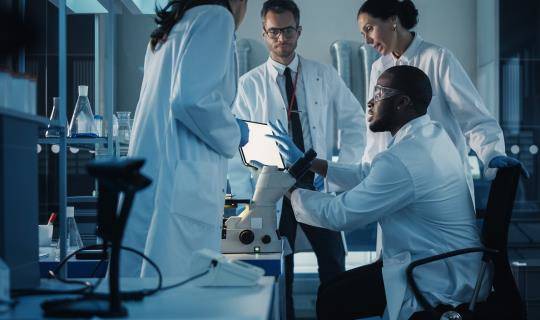Article: Contextualizing the FMD
By World Courier
The Falsified Medicines Directive (FMD) is the biggest event to happen within the European supply chain for decades and introduces measures to strengthen the legitimate supply chain. But how will it impact the illegal supply chains via the internet?
In 2012, counterfeit versions of the cancer drug Avastin were found in 19 American treatment centers. The impostor drug lacked the active ingredient, rendering it virtually useless for treatment purposes. The same year, counterfeits of Viagra and Cialis smuggled into the U.K. were found to contain undeclared active ingredients that posed potentially serious health risks to consumers. One year earlier, almost 3,000 patients in Kenya were affected by a falsified batch of the antiretroviral therapy Zidolam-N, used in the treatment of HIV/AIDS. And in 2009, counterfeits of a traditional anti-diabetic medicine killed two and hospitalized nine in China before it was determined that the fraudulent drug contained six times the normal dose of glibenclamide, a chemical used to lower blood sugar.
Isolated incidents? Sadly, no. Instead, according to world health officials, this is just the tip of the iceberg as falsified and counterfeit drugs take on a life of their own in burgeoning grey markets and increasingly slip into the legitimate supply chain.
According to WHO statistics collected in 2000:
- 32.1% of identified counterfeit drugs contained no active ingredient
- 20.2% had incorrect quantities of active ingredients
- 21.4% contained the wrong ingredients
- 5.6% had correct ingredients, but fake packaging
- 8.5% contained high levels of impurities
- 1% were copies of an original product
In today’s globalized pharmaceutical industry, it is thought that 10% of all drugs distributed globally are counterfeit. Worldwide sales of counterfeit drugs are estimated by WHO to be in excess of $75 billion annually, with some sources approximating annual market value to be as high as $200 billion. As one might expect, accurate data is hard to come by.
By all accounts, the situation promises to intensify and although global recognition of the problem now exists, controlling it has been daunting. In 2013, for instance, through joint international law enforcement and the efforts of almost 100 countries, over 10 million potentially dangerous medicines worth some $36 million were seized, resulting in 213 arrests worldwide.
In addition, almost 14,000 websites hosted by illegal online pharmacies were identified and shut down and more than 530,000 packages were inspected by customs and regulatory authorities. Of these, almost 42,000 packages − containing everything from antibiotics, cancer medication and anti-depressants to erectile dysfunction medication and dietary supplements − were seized.
The rise of counterfeit medicines sold via illegal websites takes patients outside of their national health systems and is harming patients. How can anyone know if they order on-line that they will receive actual product?
Authorities are working hard to protect the public. The European Commission’s Falsified Medicines Directive (2011/62/EU) was written into law in 2011, amending former legislation aimed at preventing falsified medicinal products from entering the legitimate supply chain. This legislation strengthens controls and checks on products moving through the supply chain and includes stricter controls on the sourcing of active product ingredients and excipients, especially those originating from non- EU countries.
Out in the world things are more difficult to control, new websites spring up everyday offering both miracle cures and prescription only medicines on-line. The FMD also calls for new or extended obligations on the part of importers and distributors of active substances, brokers, product manufacturers and wholesalers while mandating legal online pharmacies to display a common EU-wide logo on company websites.
A new root domain has been introduced .pharmacy (dotpharmacy) which can only be registered as a Generic Top Level Domain name (gTLD) by lawful businesses, and along with the Common Logo which will take users into the EMA, offering them assurance that they are using a legitimate source. As long as the publis are allowed (in their country) to buy pharmaceuticals on-line they must be protected. This represents big opportunities that need to be turned in to success stories by the pharmaceutical industry in conjunction with the regulatory authorities.


